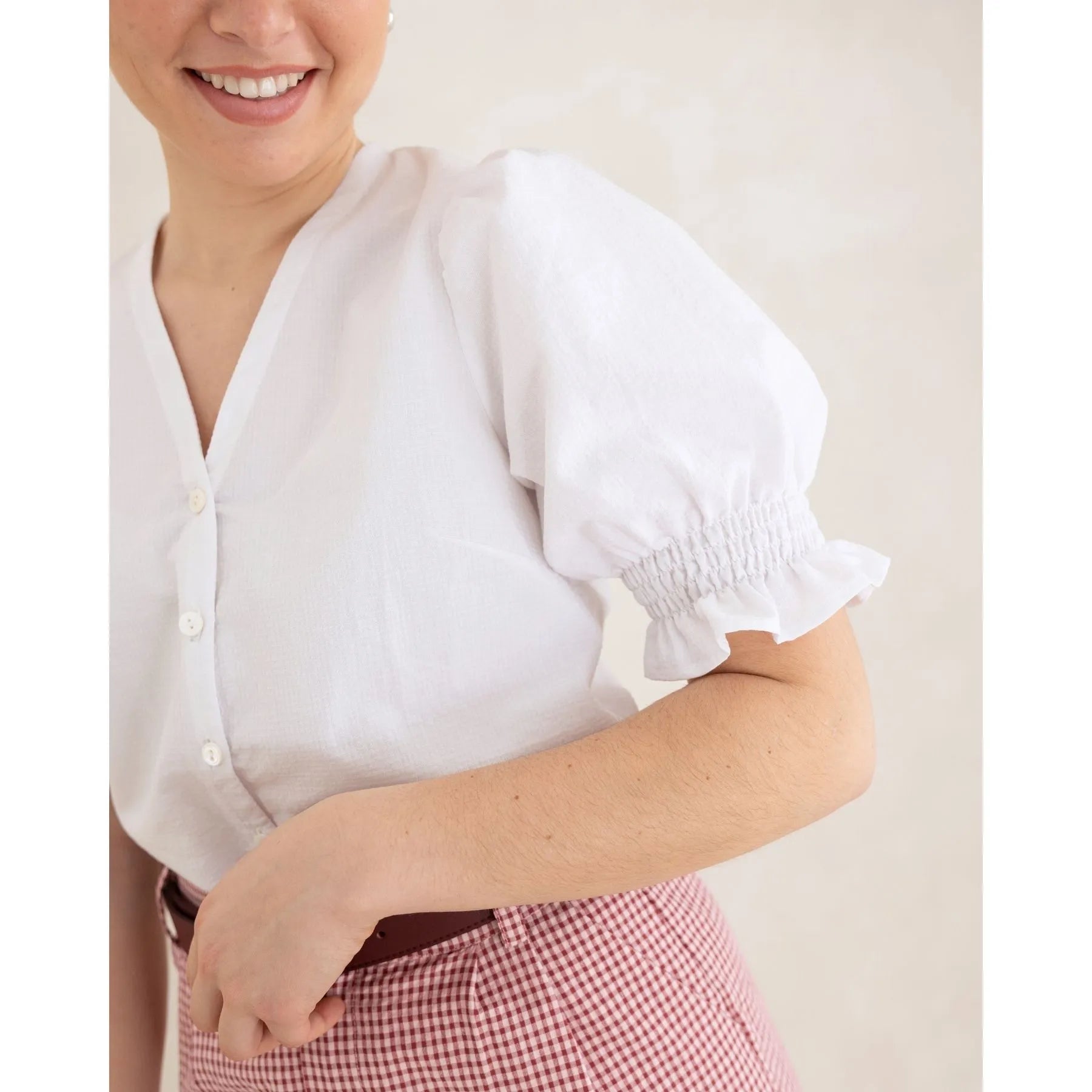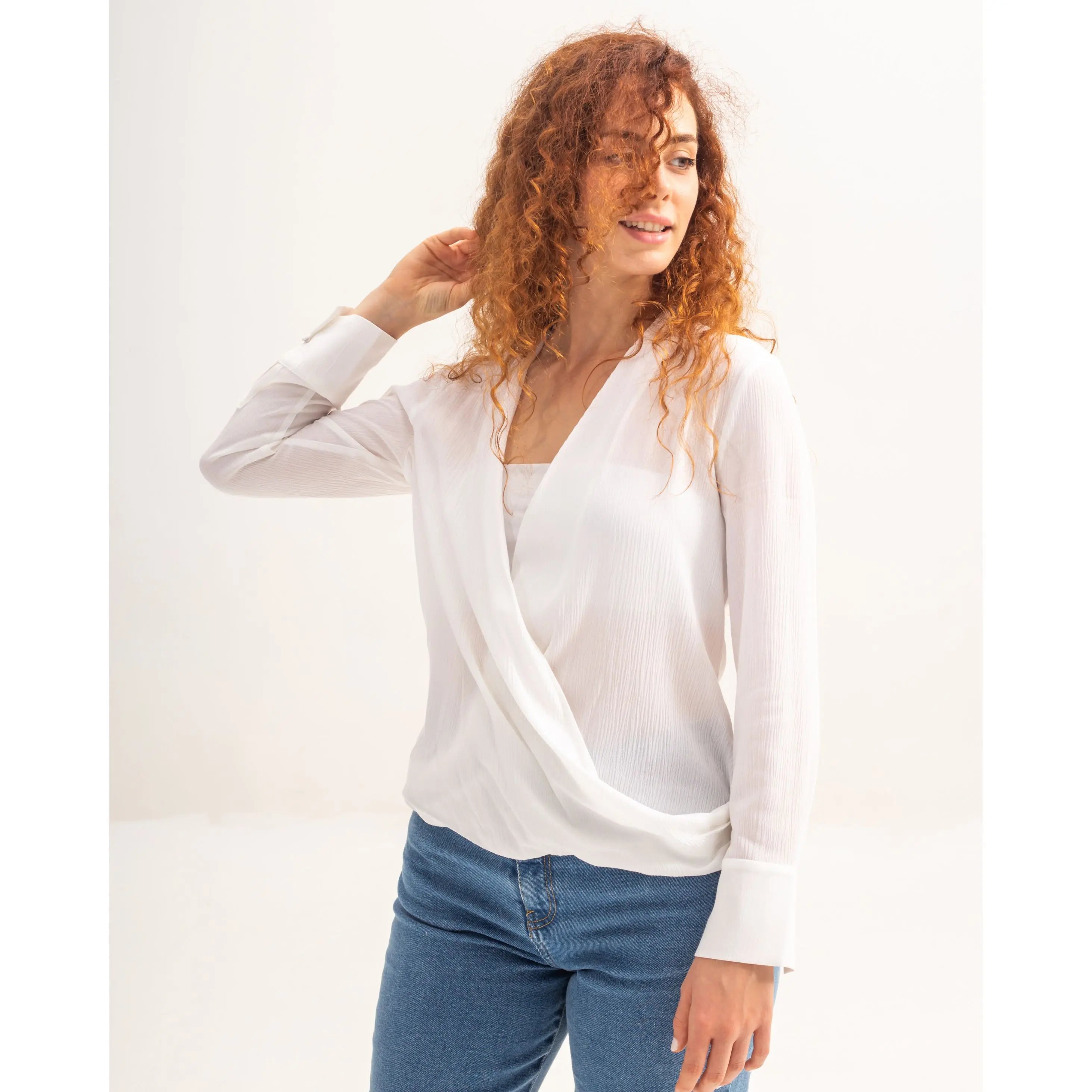Viscose fabric or also known as rayon, is one of the most used fabrics currently in the world of fashion. In fact, it has gained visibility thanks to the fact that it is a very elegant and delicate type of fabric.
Throughout the content we will address what it is, its characteristics, how to care for it, among others. Stick around and find out everything you need to know about viscose.
What is viscose?
It is a fabric produced with cellulose fibers from trees such as bamboo, eucalyptus and pine. It is one of the cheapest alternatives to silk and although it is a fabric made from natural materials, it is semi-synthetic. In fact, it is very similar to lada and cotton.
Origin of viscose
It was produced for the first time in France at the end of the 19th century, with the reliability of synthetically obtaining a fabric that was similar to the natural properties of wool.
How is it done?
All its manufacturing process begins with cellulose xanthate, a material that is removed from the cell walls of the plant. It is obtained from wood and goes through a process that turns the component into a viscous liquid. Then, this liquid is processed with chemicals to be converted into a fiber similar to natural fibers such as cotton.
Are viscose and rayon the same?
Viscose fabric is often known as “rayon”, however it is one type of rayon that exists , just like lyocell and modal. Although all these types of fabric vary in their production process, since each one requires different methods that develop a fabric with specific properties.
Mainly, rayon is obtained by cellulose dipping method, on the other hand, viscose rayon is not obtained from plant fibers, since it is produced from wood or bamboo cellulose.
Viscose characteristics
- It is considered a type of very soft fabric with an appearance very similar to silk. From a chemical perspective, viscose fabric is similar to cotton, although it can also take on other aspects depending on its function.
- It is a hypoallergenic and breathable fabric, so it will keep you cool in hot weather, but you won't suffer from cold in low temperatures either. In addition, it does not usually accumulate heat and is very efficient at supporting sweat, which is ideal for shirts and sportswear.
- Its fall is excellent for draping and movements in garments. Which means you have the freedom to be totally creative and innovative. Play with all the styles that exist to create amazing clothes.
- It can be easily dyed and retains color, so it will not lose its hue after several washes. In fact, this is an important factor that fashion designers often take full advantage of.
How to wash viscose garments?

You must be careful with the way you wash your viscose garments, since they can shrink . Therefore, in the following, we will address how to wash viscose fabric without causing damage to it.
- Check the label of your garments and identify exactly how the washing process should be.
- It is recommended to wash the garments by hand, since the washing machine can ruin the fabric.
- If you prefer to use the washing machine, be sure to choose the gentlest cycle and wash with cold water.
- To protect the fabric, we recommend using a pillowcase to avoid contact with the rest of the clothes during washing.
- Do not fold the clothes to wring out, as this can distort and damage the fabric.
It is very important that you apply each of the points, since if you do not take the necessary precautions it is very likely that your viscose garments will not last. Also, you could use some ecological detergent
Drying and ironing recommendations
- To wring out the fabric, you must carefully roll the garment and shake it out. Preferably, avoid the dryer and spin.
- Let the clothes dry in the open air, but under the shade because exposure to the sun for a long time can cause damage to the fabric. In fact, viscose is known for drying fast.
- Moisten your clothes and turn them over before ironing, in addition to using low heat.
Now, to store your viscose garments, just hang them in your closet or capsule wardrobe in case you have one and avoid folding them because they can be easily marked. If you want to keep your clothes looking new for a long time, you just have to follow each of the recommendations. Cheer up, it's not that hard!
Main uses of viscose
- The viscose fabric is used in the manufacture of clothing for its extreme softness. You can find it in garments such as shirts, sportswear, blouses, scarves, among others.
- It is also used for taffetas and velvets, feminine hygiene products, as well as for making tablecloths, napkins, bedspreads, sheets, blankets, curtains, among others.
- It is used for surgical material, non-woven products, tire carcass, among others.
Does viscose get hot?
With this fabric you will not suffer from heat thanks to its breathable properties. In fact, this fabric is so fresh that it is ideal for garments such as dresses, blouses, sports outfits, t-shirts, skirts, among others.
Is it elastic?
Viscose fabric is not elastic, since it has 2-3% elasticity. However, it is possible to combine it with other fabrics, be it spandex or another, to increase its flexibility up to 5%.
It is also a type of fabric that does not itch on the body
What if it shrinks?
If the fabric of your garment is 100% viscose, it will be very difficult to recover its original size. Although if the fabric contains spandex, the chances of it stretching are higher. However, we recommend that you avoid situations in which your garments may shrink, as they may not be able to be fixed.
Now, what should you do if the fabric shrinks?
This method is one of the most efficient, to recover garments that have shrunk due to poor care during washing. However, this trick can save your life.
What is its impact on the environment?
Although viscose fabric has many benefits, it is necessary to mention that its manufacturing process in many cases tends to harm the environment, especially if it is mass produced.
First of all, deforestation is one of the problems generated by the production of this fabric, since it is made with natural wood fibers. In addition, in its production process it requires harmful chemicals such as nitrous oxides, carbon and sulfur, chemicals that often pollute water and air.
On the other hand, it is not a secret that a large amount of water is spent irrigating the trees that are used to extract the fibers, as well as during the process to produce the fabric.
Despite all its impact on the environment, viscose fabric is considered a biodegradable fabric , since it comes from natural materials. However, it is not ruled out that its impact is high.
Conclusion
The viscose fabric is one of the most used fabrics in the world of fashion, but the reason is quite obvious, since its versatility is ideal to play and try all the styles of garments that exist.
Remember that it is super important to follow your washing instructions correctly , since you could ruin your clothes and sometimes they will be very difficult to recover. Do not forget!
Although Clotsy is a sustainable brand that does not have viscose clothing, on its website you will find garments made with other sustainable fabrics such as lyocell fabric with its " Respect " collection, linen fabric , organic cotton , etc. I also recommend that you read the tencel properties article, so that you can find out about this other fabric in the world of fashion.
Learn about sustainable clothing and vegan clothing :
Enjoy and take care of your irreplaceable viscose garments!















Leave a comment